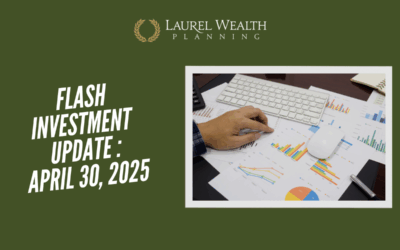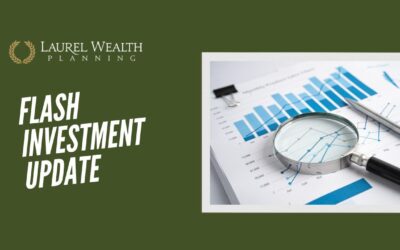With inflation sticking around and major legislation passing through Congress, we want to give you a peek into how Laurel Wealth Planning takes economic factors into account on your behalf.
Inflation
In October, the consumer-price index increased by 6.2% from last year. This is the fastest growth since 1990 for the index, which measures what consumers pay for certain goods and services. October was the fifth straight month of inflation higher than 5%.
Supply chain bottlenecks, energy market dislocations, global labor shortages and strong consumer demand have led to the price increases. New vehicle prices jumped the most since 1975 due to chip shortages. Costs rose from last month in many areas, including gasoline, rent, medical care and furniture.
Ten months ago, central bankers and lawmakers were describing inflationary as transitory. We think they will start to think of inflation as “higher for longer.” The Federal Reserve Board will likely increase interest rates modestly next year to help cool off the economy. Treasury Secretary Janet Yellen has said the Fed “wouldn’t permit” 70s and 80s-style inflation to play out.
What this economic factor means for clients: We think inflation will continue to “hang high” for 12-18 months, then move to 2.5% to 3%. We aim to increase inflation protection in client portfolios by investing in real assets and infrastructure that tend to move up with inflation and bonds that are tied to inflation.
Job and wage growth
The October jobs report was strong across the board, with 531,000 jobs added – more than the 450,000 expected. Job growth was positive across all sectors, with fastest hiring in sectors hit by supply chain disruptions. The unemployment rate fell to 4.6%, nearing the pre-pandemic rate of 3.5%. Wages rose 4.9% from last year.
Wage growth plus government stimulus checks and tax credits have led to $2.7 trillion in consumer savings during the pandemic. Added jobs and increased wages mean consumers can better weather inflation while still spending – if they can find available goods and services.
What this economic factor means for clients: Job and wage growth support our cautiously positive outlook on the markets over the next 12 months. With this outlook, we are allowing equities to run up to 5% overweight in portfolios.
Federal spending bills
The U.S. House recently passed a massive and wide-reaching $1.2 trillion infrastructure bill. It’s focus is improving transportation, internet, the power grid and drinking water. The bill, which includes about $550 billion in new spending, is heading to President Joe Biden for signature.
Half the infrastructure bill is “paid for” by unspent pandemic relief. The rest is paid for by assumptions on tax revenues from infrastructure, delaying the Medicare rebate rule, past savings and taxes on cryptocurrencies. Probably about 30% of the physical infrastructure bill is paid for by tax revenue assumptions.
Larger funding questions, like taxes on book income for companies and state and local tax deduction changes are tied to the $1.75 trillion social spending package. That bill, which includes the latest tax changes, faces a complicated path, but the market likely anticipates passage.
The Congressional Budget Office has been slow to score the bills’ impact on the national debt. The CBO has estimated that the physical infrastructure bill will add $256 billion to the debt. However, the University of Pennsylvania estimates it will reduce U.S. debt by 0.9% by 2050.
What this economic factor means for clients: We think companies involved in green infrastructure and technologies will benefit over the intermediate term from increased government-driven investment, tax credits and stimulus. In our portfolios, we have been introducing an allocation to infrastructure and infrastructure technologies to potentially benefit from this tailwind. Although fiscal support for long-term economic growth is a tailwind for equities and markets generally, we also remain cautious over the long-term of the impact of growing deficits on economic growth.

Laura, the founder of LWP, is a Senior Wealth Manager, Chief Investment Officer and Shareholder. She has a master’s degree in tax and is an excellent listener. While she is a sophisticated financial planner with experience in complex issues, her priority is ensuring a financial plan works for people.



